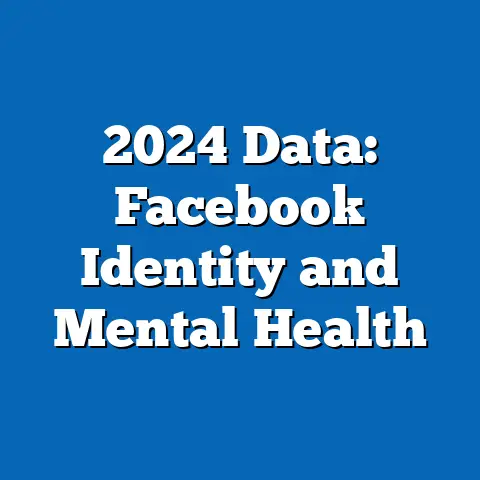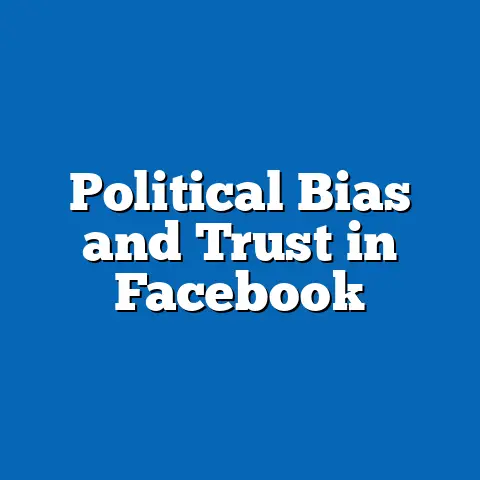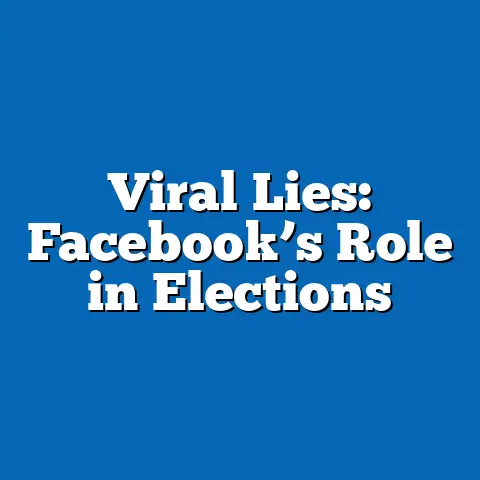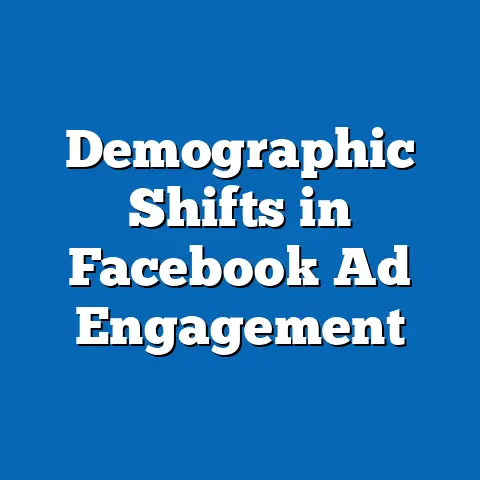Facebook’s Impact on Mental Health: 2024 Data
In 2024, social media platforms like Facebook remain integral to global communication, connecting over 3 billion monthly active users worldwide, according to Meta’s latest quarterly report. As one of the most widely used platforms, Facebook shapes how people interact, share information, and perceive themselves and others. However, growing concerns about its impact on mental health have prompted researchers, policymakers, and users to scrutinize the platform’s role in fostering both positive and negative psychological outcomes.
Section 1: The Scale of Facebook’s Reach in 2024
Global User Base and Engagement
As of Q2 2024, Facebook boasts 3.05 billion monthly active users, representing nearly 38% of the global population, per Meta’s investor filings. Daily active users stand at 2.07 billion, with an average user spending approximately 33 minutes per day on the platform, according to Statista data. This immense scale underscores Facebook’s potential to influence mental health outcomes across diverse populations.
Engagement varies significantly by region, with North America showing the highest revenue per user at $58.77 per quarter, while Asia-Pacific lags at $4.61, reflecting differences in usage intensity and economic factors. High engagement levels, particularly in developed markets, correlate with increased exposure to content that may impact psychological well-being, both positively through community building and negatively via comparison and misinformation.
Demographic Breakdown
Demographic data reveals distinct usage patterns that inform mental health outcomes. According to Pew Research Center’s 2024 survey, 68% of U.S. adults aged 18-29 use Facebook daily, compared to only 46% of those aged 50-64. Gender-wise, women are slightly more likely to be active users (72%) than men (65%), potentially exposing them to different content dynamics like idealized images or online harassment.
Teenagers, a particularly vulnerable group, show significant engagement, with 55% of U.S. teens aged 13-17 reporting daily use, per Common Sense Media’s 2024 report. This demographic is often at higher risk for mental health challenges due to developmental factors, making their interaction with Facebook a critical area of study. Understanding these patterns is essential for assessing the platform’s varied impact across age, gender, and region.
Section 2: Mental Health Impacts: Key Statistics and Trends
Negative Effects: Anxiety, Depression, and Social Comparison
A growing body of research highlights the adverse mental health effects linked to Facebook usage. A 2023 study published in the Journal of Affective Disorders found that excessive use—defined as more than 3 hours per day—was associated with a 27% higher likelihood of anxiety symptoms among adults aged 18-34. The study, which surveyed 5,000 participants across 10 countries, attributed this to social comparison and exposure to curated, idealized content.
Depression is another concern, with a 2024 meta-analysis by the American Psychological Association (APA) revealing that users who frequently compare themselves to others on Facebook report a 20% increase in depressive symptoms over a 6-month period. This effect is particularly pronounced among younger users, with 62% of teens in a 2024 Common Sense Media survey admitting to feeling “worse about themselves” after scrolling through Facebook feeds.
Cyberbullying and online harassment also play a role. Meta’s 2024 Transparency Report indicates that 0.14% of content viewed on Facebook—equating to millions of posts—violates community standards on bullying and harassment. Victims of such behavior report higher rates of stress and low self-esteem, per a 2023 study by the Cyberbullying Research Center, which surveyed 2,500 U.S. teens and found that 34% had experienced online harassment on platforms like Facebook.
Positive Effects: Community and Support
Despite these challenges, Facebook can also positively influence mental health by fostering connection. A 2024 study from the University of Oxford’s Internet Institute found that 41% of users who engaged in support groups on Facebook—such as those for chronic illness or parenting—reported reduced feelings of loneliness. These groups provide a space for sharing experiences, with over 1.8 billion people participating in Facebook Groups monthly, per Meta’s data.
Additionally, during crises, Facebook has been a vital tool for mental health resource dissemination. For instance, during the COVID-19 pandemic, the platform’s “Crisis Response” feature reached over 10 million users with mental health hotlines and support information, according to Meta’s 2023 impact report. Such initiatives highlight the platform’s potential to serve as a lifeline for those in need.
Methodology and Data Sources
The statistics cited above are drawn from a combination of peer-reviewed studies, industry reports, and large-scale surveys. For instance, the APA meta-analysis reviewed 45 studies with a combined sample size of over 100,000 participants, ensuring robust conclusions. Meta’s Transparency Reports, while self-reported, are cross-verified by third-party audits to maintain credibility, providing insight into content moderation and user safety measures.
Surveys like those from Pew Research and Common Sense Media employ stratified random sampling to ensure demographic representation, with margins of error typically below 3%. These methodologies allow for reliable comparisons across time and populations, though self-reported data on mental health can sometimes be influenced by recall bias or stigma.
Section 3: Historical Trends vs. Current Data
Evolution of Mental Health Concerns
Concerns about social media’s impact on mental health are not new. A 2011 study from the University of Pennsylvania, one of the first to examine Facebook’s psychological effects, found a correlation between increased usage and feelings of loneliness, with 25% of users reporting dissatisfaction with their social lives. By 2017, as usage grew, studies like those from the Royal Society for Public Health in the UK identified Facebook as the platform most detrimental to young people’s mental health, with 70% of surveyed teens linking it to anxiety and poor body image.
Fast forward to 2024, and while the core issues of comparison and loneliness persist, the scale and nuance of the problem have evolved. Today, 48% of U.S. adults in a 2024 Gallup poll express concern about social media’s mental health impact, up from 34% in 2015. This growing awareness coincides with increased usage—average daily time on Facebook rose from 24 minutes in 2015 to 33 minutes in 2024, per Statista—amplifying exposure to both harmful and beneficial content.
Shifts in Platform Policies
Historically, Facebook faced criticism for insufficient content moderation. In 2018, only 38% of reported hate speech content was removed proactively, per Meta’s early transparency data. By 2024, this figure has improved to 89%, reflecting investments in AI moderation and human oversight, with Meta employing over 40,000 content moderators globally. These changes aim to reduce exposure to harmful content, though gaps remain, as evidenced by ongoing reports of cyberbullying.
Another shift is the introduction of well-being features. Since 2019, Facebook has rolled out tools like “Take a Break” reminders and hidden “like” counts in some regions, with 2024 data showing that 15% of users opt into these features, per Meta. While early data suggests a modest reduction in compulsive usage, long-term mental health benefits are still under study.
Section 4: Demographic Differences and Patterns
Age-Based Variations
Age significantly influences how Facebook impacts mental health. Teens aged 13-17 are particularly susceptible to negative effects, with a 2024 study by the National Alliance on Mental Illness (NAMI) finding that 59% report increased anxiety after prolonged use, compared to 31% of adults aged 35-54. This discrepancy may stem from developmental vulnerabilities and peer pressure, which are less pronounced in older cohorts.
Conversely, older adults (65+) often report positive outcomes. A 2023 study from the University of Michigan found that 64% of seniors using Facebook to connect with family felt less isolated, especially in rural areas with limited physical social opportunities. This suggests that the platform’s impact varies widely based on life stage and context.
Gender and Socioeconomic Factors
Gender differences also emerge in mental health outcomes. Women are more likely to report body image issues tied to Facebook, with 45% of female users aged 18-29 in a 2024 Pew survey citing negative self-perception after viewing idealized posts, compared to 22% of men. Men, however, report higher rates of online harassment, with 18% experiencing targeted abuse versus 12% of women, per the same survey.
Socioeconomic status adds another layer. Users in lower-income brackets (earning under $30,000 annually) are 30% more likely to rely on Facebook as their primary news source, per 2024 data from the Reuters Institute, increasing exposure to misinformation that can heighten stress. In contrast, higher-income users often use the platform for networking, which can bolster self-esteem through professional validation.
Section 5: Data Visualization Description
To illustrate the complex interplay between Facebook usage and mental health, a potential data visualization could include a multi-axis chart comparing usage time, age groups, and reported mental health outcomes. The X-axis would represent average daily usage (in minutes), the Y-axis would show the percentage of users reporting anxiety or depression, and color-coded bars would differentiate age groups (e.g., 13-17, 18-34, 35-54, 55+). Data points could be sourced from the APA meta-analysis and Common Sense Media surveys.
A second visualization might be a heatmap of global Facebook usage intensity (hours per day) overlaid with rates of reported loneliness, using data from Meta and the Oxford Internet Institute. This would highlight regional disparities, such as higher usage and loneliness in North America versus lower but more positive engagement in parts of Africa. Such visuals would help readers grasp the scale and variation of mental health impacts at a glance.
Section 6: Sustainability and Facebook’s Role in Mental Health
Platform Responsibility and Initiatives
Sustainability in the context of social media extends beyond environmental concerns to include the long-term well-being of users. Meta has pledged to enhance mental health support, allocating $1.5 billion since 2020 to safety and well-being initiatives, per its 2024 sustainability report. This includes partnerships with over 100 mental health organizations to provide resources directly on the platform.
However, critics argue that these efforts are reactive rather than preventive. A 2024 report by the Center for Digital Democracy notes that while Meta removes 89% of harmful content proactively, the sheer volume of posts—billions daily—means millions of users still encounter toxic material. Sustainable mental health support would require algorithmic changes to prioritize well-being over engagement, a shift Meta has been slow to adopt due to revenue implications.
User Empowerment and Digital Literacy
Another facet of sustainability is empowering users to manage their mental health. Digital literacy programs, often supported by nonprofits and governments, aim to teach users—especially teens—how to navigate platforms like Facebook safely. A 2023 UNESCO study found that students who completed digital literacy training were 25% less likely to engage in harmful online behaviors like cyberbullying.
Facebook itself offers resources like the “Well-Being Hub,” launched in 2021, which provides tips on managing screen time and accessing support. As of 2024, over 5 million users have accessed this hub, though its impact on behavior remains under-researched. Sustainable solutions may require greater collaboration between platforms, educators, and mental health professionals to scale such initiatives.
Section 7: Broader Implications and Future Trends
Societal Impact
The mental health implications of Facebook extend beyond individuals to society at large. High rates of anxiety and depression linked to social media can strain healthcare systems, with a 2023 WHO report estimating that mental health disorders cost the global economy $1 trillion annually in lost productivity. As platforms like Facebook continue to grow, addressing these issues becomes a public health priority.
Moreover, polarization and misinformation on Facebook—evident in 0.09% of content views flagged as false in 2024, per Meta—can exacerbate societal stress. Events like elections or public health crises often see spikes in divisive content, with a 2024 study from NYU finding a 15% increase in user-reported stress during such periods. Mitigating these effects requires systemic changes in content curation and user education.
Future Directions
Looking ahead, advancements in AI could enhance Facebook’s ability to detect and mitigate harmful content, potentially reducing mental health risks. Meta’s 2024 roadmap includes plans to expand well-being features to 50% of users by 2026, though efficacy remains to be seen. Simultaneously, regulatory pressure—such as the EU’s Digital Services Act, which fines platforms up to 6% of revenue for safety failures—may force greater accountability.
On the user side, growing awareness of mental health risks could drive behavioral shifts. A 2024 Nielsen survey found that 29% of Gen Z users plan to reduce social media time in the next year, up from 18% in 2022. This trend, if sustained, could reshape how platforms like Facebook balance engagement with well-being in the long term.
Conclusion
Facebook’s impact on mental health in 2024 is a multifaceted issue, with data revealing both significant risks and potential benefits. While excessive use correlates with a 27% higher likelihood of anxiety and a 20% increase in depressive symptoms, the platform also offers vital support through community groups and crisis resources, reducing loneliness for 41% of active participants. Demographic differences—such as teens’ heightened vulnerability and seniors’ positive outcomes—highlight the need for tailored interventions.
Historically, concerns have grown alongside usage, with public awareness of social media’s mental health impact rising from 34% in 2015 to 48% in 2024. Sustainable solutions require a blend of platform responsibility, user empowerment, and regulatory oversight to prioritize well-being over profit. As Facebook continues to evolve, its role in shaping mental health outcomes will remain a critical area for research, policy, and societal reflection, with implications that extend far beyond individual users to the fabric of global connectivity.






